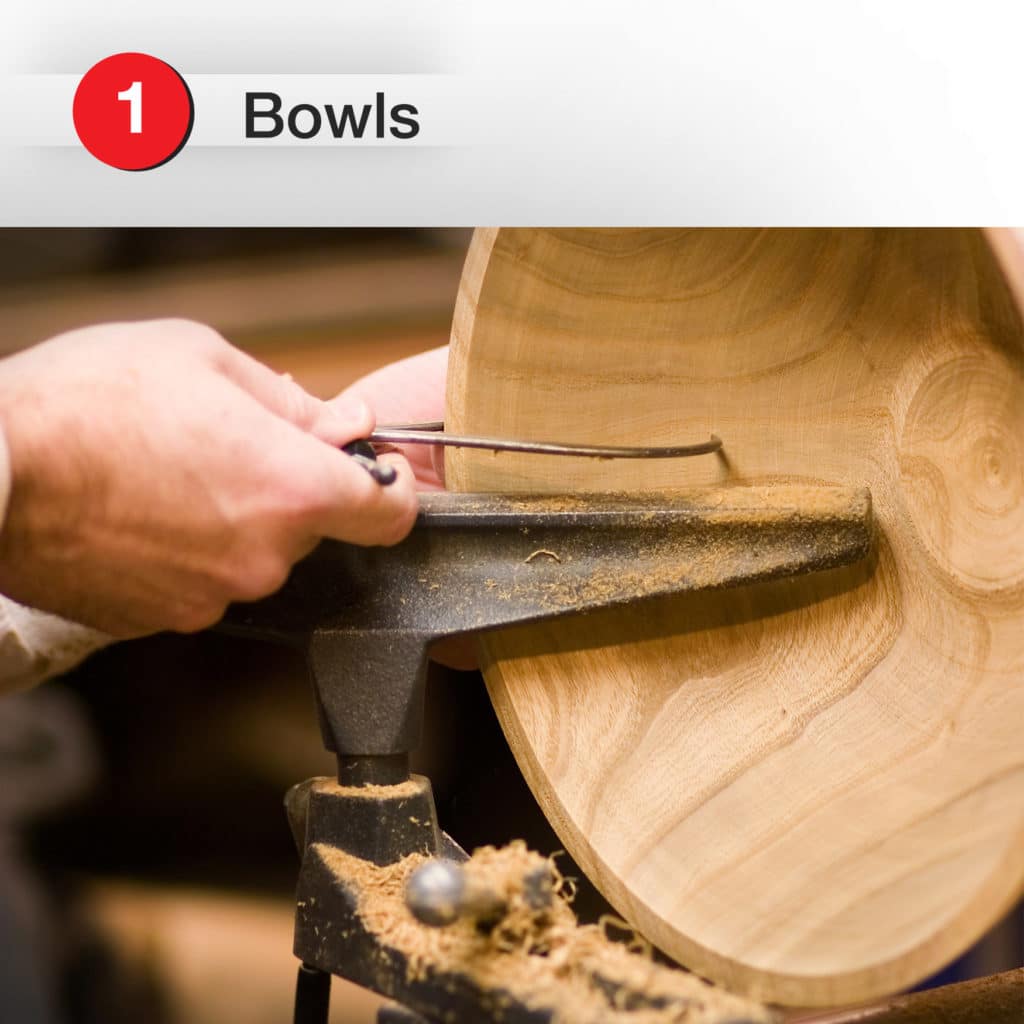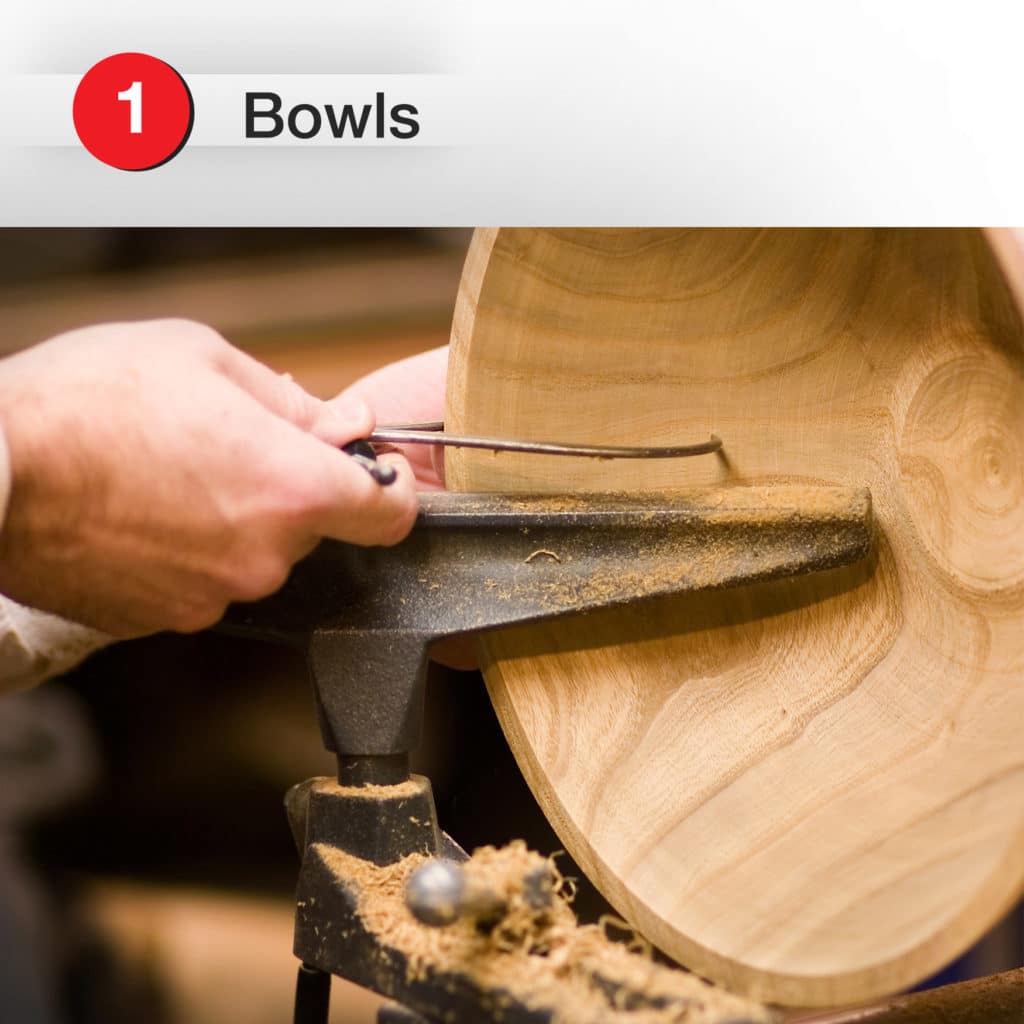If you’re curious about woodworking and the amazing things you can create with a wood turning lathe, you’re in for a treat! Wondering “what can you make with a wood turning lathe?” Well, you’ve come to the right place!
Wood turning is a craft that allows you to shape and transform wood into beautiful and functional objects. From decorative bowls and vases to intricate spindles and furniture parts, the possibilities are endless. So, let’s dive in and explore the exciting world of woodturning!
Whether you’re a beginner or an experienced woodturner, this article will introduce you to the incredible range of projects you can tackle with a wood turning lathe. Get ready to unleash your creativity and discover the joy of working with wood in a whole new way! So, let’s gather our tools and embark on this woodworking adventure together!

Exploring the Possibilities: What Can You Make with a Wood Turning Lathe?
Wood turning is a versatile form of woodworking that allows you to create a wide range of beautiful and functional objects. With a wood turning lathe, you have the power to shape and mold wood into various forms and designs. From decorative pieces to practical items, the possibilities are endless. In this article, we will delve into the many things you can make with a wood turning lathe, providing you with inspiration and practical tips along the way.
Creating Beautiful Bowls and Vessels
The wood turning lathe is perfect for carving out bowls and vessels that can be both decorative and functional. Whether you prefer a natural look or a more intricate design, the lathe allows you to shape the wood with ease. From small decorative bowls to large salad bowls, you can create unique pieces that showcase the natural beauty of the wood grain. Additionally, you can experiment with different finishes to enhance the appearance and durability of your creations.
Choosing the Right Wood:
When it comes to wood turning, the choice of wood is crucial. Different types of wood offer varying levels of durability, grain patterns, and aesthetics. Hardwoods like maple and walnut are popular choices due to their durability and beautiful grain patterns. Softer woods like pine and cedar, on the other hand, are great for beginners as they are easier to work with. Consider the purpose of your bowl or vessel and choose a wood species that suits your needs.
Tools and Techniques:
To turn a bowl or vessel on a lathe, you will need a few essential tools such as a gouge, parting tool, and scraper. These tools allow you to remove material, shape the wood, and create smooth curves and finishes. When it comes to techniques, mastering proper tool control is essential. The direction and angle of your cuts can greatly affect the outcome of your piece. Practice and patience are key to achieving the desired results.
Finishing Touches:
Once you have shaped and smoothed your bowl or vessel, it’s time to apply a finish. Finishes not only protect the wood but also enhance its natural beauty. You can choose from various finishes such as oils, waxes, or lacquers, depending on the desired look and level of protection. Remember to sand the surface properly before applying the finish to achieve a smooth and flawless result.
Turning Elegant Pens and Writing Instruments
Wooden pens and writing instruments are another popular project for wood turners. With a wood turning lathe, you can create customized pens that are unique and personal. Whether you’re making a gift or indulging in your own passion for writing, turning pens can be both rewarding and enjoyable.
Choosing the Right Materials:
When it comes to pen turning, you have a wide range of materials to choose from. Exotic woods, acrylic resins, and even stabilized burls can be turned into stunning pens. Consider the look and feel you want to achieve and select materials accordingly. Each material has its own unique characteristics, so take the time to experiment and find what works best for you.
Turning Techniques:
Turning pens requires precision and attention to detail. Start by preparing the pen blank and securing it on the lathe. Gradually shape the blank using various tools such as a skew chisel or spindle gouge. The art lies in achieving smooth curves and a comfortable grip. Experiment with different cuts and techniques to find your own style.
Assembling and Finishing:
Once you have turned the components of the pen, it’s time to assemble them. This involves attaching the hardware, including the pen mechanism and clip. Use epoxy or super glue to secure the parts in place. After assembly, sand the pen to a smooth finish and apply a protective coating such as wax or polyurethane. Finally, buff the pen to bring out its natural shine.
Transforming Wood into Artistic Sculptures
Wood turning also allows you to unleash your creativity and transform wood into artistic sculptures. From intricate carvings to contemporary designs, the lathe can bring your imagination to life.
Design and Planning:
Before you start turning a sculpture, it’s important to have a clear design and plan in mind. Consider the shape, form, and dimensions of the sculpture. Sketch out your ideas or create a model from clay or foam to visualize the final piece. This step ensures that you have a roadmap to follow during the turning process.
Techniques and Tool Selection:
When it comes to sculptural turning, the choice of tools is crucial. You will need a combination of spindle gouges, scrapers, and detail tools to shape and carve the wood. Techniques such as undercutting, beading, and texturing can be used to add depth and dimension to your sculpture. Experiment with different tools and techniques until you achieve the desired effect.
Finishing and Display:
The finishing of a sculptural piece is as important as the turning itself. Consider the overall look and feel you want to achieve. Some artists choose to leave the wood natural, showcasing its raw beauty, while others prefer to paint or stain the sculpture. Experiment with different finishes and techniques to enhance the visual appeal of your creation. Finally, choose an appropriate display stand or base that complements the sculpture and allows it to be prominently showcased.
In summary, a wood turning lathe opens up a world of possibilities for creativity and craftsmanship. From functional bowls and pens to intricate sculptures, the lathe allows you to transform wood into unique and personal creations. With the right tools, techniques, and materials, the possibilities are limitless. So, unleash your creativity, embrace the art of wood turning, and let your imagination take flight.
Key Takeaways: What Can You Make with a Wood Turning Lathe?
- Wooden bowls: With a wood turning lathe, you can create beautiful and functional wooden bowls for serving or decoration.
- Vases and vessels: Use the lathe to shape wood into elegant vases and vessels, perfect for displaying flowers or holding items.
- Pens and pencils: Make unique writing instruments by turning wood on the lathe, adding a personal touch to your stationary collection.
- Handles and knobs: Customize your furniture or cabinets with handcrafted wooden handles and knobs, giving them a unique and stylish look.
- Artistic sculptures: Let your creativity shine by sculpting intricate designs and shapes from wood using the lathe.
Frequently Asked Questions
Welcome to our FAQ section where we answer common questions related to what you can create with a wood turning lathe!
1. What are some examples of projects I can make with a wood turning lathe?
With a wood turning lathe, you can create a wide variety of projects. Some popular examples include bowls, vases, pens, candlesticks, and even intricate wooden figurines. The possibilities are endless! You can experiment with different types of wood, shapes, and finishes to bring your creative ideas to life.
Whether you’re a beginner or an experienced woodworker, a wood turning lathe allows you to unleash your imagination and craft beautiful, functional objects.
2. How do I choose the right type of wood for my wood turning projects?
Choosing the right type of wood is crucial for the success of your wood turning projects. While there are various factors to consider, some common types of wood that are favorable for turning include maple, cherry, walnut, and oak. These woods are known for their durability, attractive grain patterns, and ease of turning.
It’s important to select wood that is properly seasoned and free from defects such as knots or cracks. Additionally, consider the size and shape of the wood piece you are planning to turn, as certain types of wood may be more suitable for specific projects. Experimenting with different types of wood will also help you discover your personal preferences as a woodturner.
3. What tools do I need to get started with wood turning?
To get started with wood turning, you’ll need a few essential tools. These include a lathe (such as a wood turning lathe), a set of high-quality turning chisels, a chuck or faceplate to hold the wood securely, a sharpening system for keeping your chisels sharp, and safety equipment like goggles and a face shield.
As you progress in your wood turning journey, you may also want to invest in additional tools such as a parting tool, skew chisel, or a hollowing tool. It’s best to start with the basics and gradually expand your tool collection based on your specific projects and needs.
4. How should I prepare the wood before turning it on the lathe?
Before turning the wood on the lathe, it’s essential to properly prepare it. Start by square-cutting the ends of the wood piece and attaching it securely to the lathe using a chuck or faceplate. Make sure the wood is balanced and securely mounted to avoid any accidents.
Next, use a roughing gouge to remove excess material and bring the wood into a rough shape. This process, known as roughing, helps to eliminate any potential imbalances and allows you to work with a more stable and manageable piece of wood. Once the rough shape is achieved, you can move on to refining the design and adding details using different turning chisels.
5. Are there any safety precautions I should take when using a wood turning lathe?
Yes, safety should always be a top priority when using a wood turning lathe. Some essential safety precautions include wearing protective gear such as goggles or a face shield to protect your eyes from flying wood chips or debris.
Always make sure your lathe is properly secured to a stable work surface and that all the moving parts are in good working condition. Take your time and work at a comfortable pace, avoiding any sudden or jerky movements. Additionally, ensure that you understand and follow the manufacturer’s instructions and guidelines for your specific wood turning lathe model.

Summary
So, what can you make with a wood turning lathe? A wood turning lathe is a versatile tool that allows you to create various wooden objects. You can make bowls, vases, pens, candlesticks, and even furniture parts. The possibilities are endless!
With a wood turning lathe, you can unleash your creativity and bring your ideas to life. Remember to always prioritize safety and take your time to learn and practice different techniques. Whether you’re a beginner or an experienced woodworker, the wood turning lathe opens up a world of possibilities for you to explore and enjoy.
